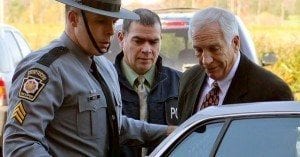
Scholars claim to have found the tomb of Jesus
The “Jesus Discovery” caused quite a buzz this week when researchers working in Jerusalem announced the discovery of ossuaries (limestone burial boxes) with markings indicating early Christianity.
One of the Jesus discovery boxes was etched with what appears to be a fish with a stick figure in its mouth. The researchers said this represents the biblical story of Jonah who was swallowed by a large fish and spit out three days later. The researchers said the etching caught their interest because a fish would not typically be found on a Jewish ossuary.
The second ossuary is inscribed with a Greek phrase that translates to “Divine Jehovah, raise up, raise up” or “The Divine Jehovah raises up to the Holy Place.”
The tomb these ossuaries were discovered in lies 200 feet away from JamesTabor’s 1980 discovery of the “Jesus Family Tomb.” Tabor is the lead researcher and chairman of the department of religious studies at the University of North Carolina at Charlotte. The Jesus Family Tomb contained ossuaries marked with the names Jesus, son of Joseph, Judah, son of Jesus and the names of Jesus’ brothers and sisters.
Tabor was criticized because his findings could not be proven. Despite criticism and discrepancies with the bible, he continued working and found the tomb of the Jesus Discovery soon after. Initially, Israeli authorities would not give them permission to open it, but in June 2010, an agreement was reached, allowing Tabor to use a robotic arm equipped with a camera to investigate the tomb.
Tabor and his partner, filmmaker Simcha Jacobovic revealed their findings Tuesday.
Other archeologists don’t support Tabor’s findings. Christopher Rollston, a professor of Near-Eastern studies at the Emmanuel Christian Seminary, criticized Tabor for misreading the inscriptions, which don’t mention Jehovah. “Ultimately, I would suggest that this is a fairly standard, mundane Jerusalem tomb of the Late Second Temple period,” he wrote on the ASOR blog. “Stringing together a series of ‘maybe this’ or ‘perhaps this’ or ‘could it be’ will sell books, but it will not convince careful historians nor will it change the facts.”















